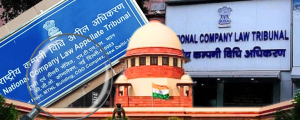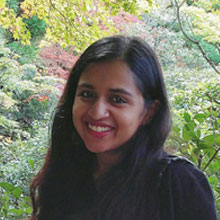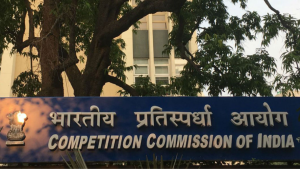

Judicial Independence and the Appointment of Judges – a Transcript of DAKSH’S 4th Annual Constitution Day Lecture
The Fourth Annual Constitution Day Lecture hosted by DAKSH at the Indian Institute for Human Settlements (IIHS) Auditorium on Saturday, 28 November, 2015, was a gathering of members from the legal community, students, and citizens interested in governance.
The lecture was delivered by Mr Raju Ramachandran, Senior Advocate at the Supreme Court of India. Mr Ramachandran is an eminent lawyer and a former Additional Solicitor General of India. Mr Ramachandran spoke on the topic of ‘Judicial Independence and the Appointment of Judges’, in light of the recent NJAC judgement. The transcript of Mr. Ramachandran’s lecture is as follows.
Thank you DAKSH, thank you Harish, and thank you all for coming.
In 1951, one year after we the people gave ourselves this Constitution, Jawaharlal Nehru said, ‘This magnificent Constitution that we have framed has been kidnapped and purloined by lawyers.’ When he says lawyers, he meant lawyers and judges. He meant the robed fraternity. Many kidnappings and purloins [sic] have happened since then. But, the most egregious kidnapping in recent times happened on 16th of October this year when the Supreme Court struck down the Constitution’s 99th amendment and the NJAC Act, which tried to bring in a new constitutional regime governing the appointment of judges.
Now, let us start with some basics. We the people have given ourselves this Constitution which embodies the rule of law. If judges have been given the power by our Constitution to strike down the laws of Parliament which violate fundamental rights (later of course, came the basic structure theory), in essence, the Constitution has given the judges a political role. The role of a higher judiciary, therefore, let us all be clear, is a political role and therefore, if we the people have given such vast powers to the judges, do we the people have the right to participate in the process of appointment of judges, or should judges self-select? Should it be — Arun Jaitley used a really attractive expression, a gymkhana club—where members decide who the new members are going to be? Now this question, therefore, needs to be viewed not as an executive and legislature on one side and judiciary on the other, but, as something which concerns the whole culture of constitutionalism in our country.
Now, let’s get one more judiciary-evolved concept clear—the basic structure theory. Till the Golaknath[1] case in 1967, it was accepted that the Parliament’s power to amend the Constitution was untrammelled. It was 17 years [after the Constitution came into force], in the Golaknath[2] case, that the Supreme Court by a majority said that no, Parliament’s power to [amend] the Constitution cannot touch the fundamental rights, and then, later again by a definite majority, the largest-ever bench of the Supreme Court held that the power of Parliament to amend the Constitution does not extend to abrogate the basic structure of the Constitution.
Now, full disclosure, I am a known critic of the basic structure doctrine on conceptual grounds. But that is irrelevant for the purpose of today’s talk and discussion. We [will] proceed on the basis, as we have to, that the basic structure theory is the law of the land. Now, the basic structure is not defined in the Constitution itself, it is spelt out by judges on a case-by-case basis and interestingly, [in] the Kesavananda Bharati[3] case, which first propounded this theory, though different judges set out illustrative examples of what might constitute the basic structure, not one judge says independence of the judiciary is a part of the basic structure. Justice Khanna says possibly judicial review, but independence of the judiciary was not set out in illustrations given by the judges themselves as part of the basic structure. But, that doesn’t matter. If there is a basic structure theory, I don’t think there can be any quarrel with the proposition that independence of the judiciary is part of the basic structure of the Constitution. As is democracy, as is separation of powers, as is a system of checks and balances. But, the problem arises when, while analysing the basic structure, you forget the architecture, you forget the design, and you come down to individual bricks.
Let me just develop this a little: when you talk of a structure, four professions are involved—architecture, civil and structural engineering, masonry and brick laying. Now, when you strike down an amendment to the Constitution, are you going to look at how the architecture is damaged? How the structure is damaged? Or are you going to look at the colour of the individual bricks and the quality of individual bricks and say that if one brick is replaced by another, the basic structure is violated. And that is the central problem with this judgment, which we will come to as we get into more details. Now, normally when we talk of basic structure we think of the original Constitution. Though, conceivably you can say that when significant additions are made, then in due course those additions may become basic. That’s something debatable and it can happen. But, when we are talking of the basic structure theory, [in] the context of our relatively young Constitution, we are talking of the original Constitution.
Now, what was basic in the matter of judicial appointments as [far as] the original Constitution was concerned? It was this particular feature that the President, which means the executive, did not have the untrammelled right to appoint judges to the superior judiciary, unlike [the] case with many constitutions around the world, where the executive has the absolute right to appoint judges, and such constitutions are constitutions of countries which boast of judiciaries no less independent than ours. But, the choice was made that the President, that is, the executive, will not have this untrammelled right and that he would do it in consultation with the Chief Justice of India and such other judges of the Supreme Court whom he might find fit to consult. Now, in the First Judges case, 1981[4], the Supreme Court accepted the position that what Article 124 of the Constitution envisaged was consultation. Consultation of course means due regard, deference, but, consultation did not mean concurrence. But, the Second Judges case, 1993[5], reversed this position, and, in my view, rewrote the Constitution, to hold that in effect, this [concurrence] is what it meant, and the Court advanced an interesting theory for this. The Court viewed it from the point of view of competence to select. Who, which, is the best institution to select judges? It is the judiciary, because lawyers are made judges. Courts are the arena of their performance and therefore, judges are best equipped to assess the suitability of candidates for judgeship and so there is really no question of primacy as such. If you look at it from the point of view of who is best equipped, it is the judiciary, and therefore, the question gets resolved that it is ultimately the judiciary. Now that judgment, as I said, was an egregious rewriting of the Constitution. But the political class did not stand up at that time, did not assert itself at that time. The surrender of the political class to judicial supremacy was evident from 1973, after the Kesavananda Bharati case[6], because when the first inroad was made in the Golaknath case, there was at least one strong champion of parliamentary rights, socialist MP, [Nath] Pai, who made it his life’s mission to get the judgment of the Supreme Court in Golaknath[7] overruled by the constitutional process, but that was not to be. That surrender, which started post Kesavananda Bharat[8], and that was because the emergency came soon after that and so the political class also felt that no, the only thing that stood between dictatorship and the people was the Supreme Court and the basic structure theory and therefore, in 1993 [it was still evident], [and] there was no political consensus. Then came 1998. In 1993, while rewriting the Constitution, the Supreme Court created a constitutional institution called the collegium and defined its composition. In 1998, the Supreme Court, in its own interest, because the collegium, as originally envisaged, was not working the way it wanted to, because of problems with particular appointments and particular judges in the collegium, itself re-defined the collegium to make it larger—five instead of three. The experience of the collegium system over the years ultimately led to this rare unanimity in the political class, which led to this major amendment being passed.
Let’s briefly recapitulate what the features were:
The National Judicial Appointments Commission would have the Chief Justice of India and two senior most judges as ex-officio members. The executive was represented by a lone member—the law minister. A very refreshing innovation—civil society—was brought in by prescribing that there would be two eminent members, one of whom would be from among either SCs/STs/OBCs/minorities or women. A refreshing innovation in the interest of diversity. It also provided that the working and the procedure would be prescribed by the Act and the renovations under the Act. The Act provided that if any two members in the six-member body had reservations about a recommendation, that recommendation would not go through, which was considered a veto, but it was really a special majority, that you needed a majority of 4 out of 6. But, please remember that this provision in any case was in the Act and not the constitutional amendment. But the constitutional amendment has still been struck down on the ground of there being a veto, though in the Act, but the act and the amendment are part of a package deal and therefore, both must go. Now, what is the basis of the judgment of the majority? There are four judgments and therefore, it’s confusing but let’s, [we have tried to] cull it out as lawyers. Independence of judiciary is part of the basic structure, the process of appointment of judges is a necessary part of the independence of judiciary, and primacy of the judiciary is a necessary part of the process of appointment which is integral to the independence of the judiciary. This primacy is taken away by the constitutional amendment and therefore, the basic structure is violated, [and] the amendment is bad, the Act is bad, period.
Now let’s come back to the four professions which I referred to. Primacy is not part of the architecture, it’s not a part of the structure. It is supposedly a part of a wall and the primacy is gone because the judges are three out of six, they do not have the majority to overrule the decision, the view of civil society and the executive and therefore, primacy is violated. Now, therefore, we are coming to bricks and we don’t confine ourselves to the structure, contrary to the Supreme Court’s own view in dealing [with] challenges to other constitutional amendments. So there are double standards here, because there will be very few instances, four or five, where the Court has struck down constitutional amendments, where the Court has said [that] it has to be some overarching principle which is violated before we can strike down the constitutional amendment on the ground of violation of basic structure. But, when it came to the Court’s own perception of judicial independence, it said goodbye to that test. Now let us assume for the sake of our argument that yes, primacy is part of the basic structure. But what does primacy mean? When the amendment gave an institutional majority to the judiciary, that is three, and deliberately opted for giving institutional minority to the executive—one and institutional minority to civil society—two, weren’t the requirements of primacy met? If you have an institutional majority wasn’t the requirement of primacy met? Apparently not, in the view of the Supreme Court, because primacy must mean their overwhelming majority, their veto. This, I submit, is a deeply flawed view and a self-serving view.
Now, let me come to the next point. Why is it that outside participation is necessary in the process of judicial appointments to a judiciary which enjoys such vast political power? The first [reason] is based on the doctrine of checks and balances itself, which is also part of the basic structure. If the judiciary can strike down laws of Parliament passed by elected representatives of the people, surely there ought to be an evidence of democratic participation in appointment of those judges in whom such vast power is vested. Vested by whom? By the people who have created this Constitution, who have created these courts. So the checks and balances theory requires that there must be an element of democratic participation in the process of judicial appointments.
Secondly, independence of judiciary is very narrowly viewed by this judgment and by our robed fraternity generally, as independence from executive interference. Now, independence from executive interference is only one aspect of independence of the judiciary. Independence of the judiciary also means judges must be independent of corporate houses, of business lobbies, of lawyers, of law firms and most important, judges need to be independent of themselves. Independence from themselves means independence from their own prejudices and proclivities, independence from caste and religious considerations because after all, judges are all from the same society, independence from the career interests of their own kith and kin. Who is to interrogate judges on these aspects unless there is outside participation? Then comes the question of the social philosophy of judges, which is something essential in a constitutional court. Now, I think a large number in this audience would’ve been shocked at the judgment of the Supreme Court in the 377 case[9]. Now why did that happen? Because there was no one to interrogate prospective Supreme Court judges on their social philosophies. So let’s not get scared by this word ‘social philosophy’. I am saying this particularly because those of us who grew up, who came of age, in the 70s were taught that social philosophy is a bad word because, when Mrs Gandhi wanted to supersede judges who did not see eye to eye with her in her socialistic reforms, one of Mrs Gandhi’s ministers, the late Mohan Kumaramangalam, who was not the law minister, but [he was] the one who articulated this with great candour and honesty that the social philosophy of judges is important. And we thought that was something dirty because social philosophy meant that courts were going to be packed with judges who are convenient to the executive. But, social philosophy as we see now means much more and therefore, judges need to be interrogated on their social philosophies and this can only be done with outside participation. The last important reason for outside participation is that judges, when they self-select, are only giving each other chance, ‘who may get’ and that’s why you have this completely ridiculous spectacle over the years of Chief Justices of India who have held office for 17 days, 30 days, 3 months. Chief Justices who have been sworn in in High Courts for even 1 day and 2 days so that they could reach that particular scale for the purpose of their pension. On the one hand, you would say that the CBI director must have two years, the home secretary must have two years, foreign secretary must have two years, but, the Chief Justice of India, and Chief Justices of High Court don’t have to have a minimum period. The point I’m driving at is that the concept of manpower planning in interest of effective functioning of an institution is completely alien to the minds of judges when they sit and self-select.
There is another interesting concept which I read about in the context of rise in hierarchies in the field of business management. The concept of homo-social cloning or homo-social reproduction and this has been studied in the context of gender discrimination, women not rising in an organisation, or blacks, Hispanics, etc. When a homogenous body self-selects, it subconsciously selects people in the same mould, people like us, ‘PLU’. Why does a judge like a particular young lawyer who is appearing before him? Because he sees himself as a young lawyer, he sees his own young days. It is that kind of a lawyer who makes an impression on him. This is a fact of human nature and therefore, as a check on homo-social cloning also, the importance of the outsider cannot be forgotten.
Now [to] this judgment, and I will just give a brief analysis for [the] benefit of lawyers and law students present in the audience, and then come to my concluding point.
This is for lawyers now—for the future of the basic structure theory, this judgment opens up frightening possibilities. One is this concept of derived basic structure, the brick work of the basic structure. Secondly, the comparison between different pillars of the basic structure and the judicial fiat that it is all that it is not an express fiat but, if you have to choose between different pillars of the basic structure, then the independence of the judiciary is the most important. And, the third is that, in matters involving the judiciary itself, there is going to be a significant lowering of the threshold as far as applying the basic structure theory is concerned. Now you can forget all about overarching principles. Anything which the judges feel affects the judiciary can be brought in within the basic structure concept. So that is for the lawyers and the legal academics here to ponder over.
Now, to civil society, I would want to highlight the fact that this judgment shows a certain—not just condescension—but a certain contempt for civil society. One judgment says, and I read and re-read the line to see if there was some typo in that line, whether something was missed, but no, it is there, that at the present juncture civil society is ‘not evolved enough’ in our country to make any kind of meaningful contribution. Another judge says in his judgment that it is quite possible that both the civil society and the law minister can be influenced by extraneous considerations. So, [there is] a deep distrust of the political class, which is bad for the Constitution. The political class ultimately is a class which is answerable to the people, which is elected and which gets thrown out, unlike we learned people, who once appointed to the Bench can’t be removed except by special majority of Parliament. There, if the Constitution is amended to say no, instead of special majority, make it simple majority, the Court will strike it down. But, here, in the context of judicial appointments that special majority is said to be bad. Now, civil society in my view can be the ultimate saviour in situations where judges and lawyers and the law minister gang up—[although,] why is this judgment only thinking of others ganging up against judges? Why is it presumed that the three judges will think alike, which is not necessarily so, which is not the experience of the collegium also. On the other hand, the law minister is often a very eminent lawyer. It is important to remember this because, during arguments in this case, people only thought of one particular diabolical politician who was the law minister, but, there are renowned lawyers who are also law ministers and who are part of the same cosy club as the judges. That [an] eminent senior advocate who is law minister today will soon demit office [during] the change in government and he will be addressing these judges in court. So, the law minister also has some self-interest. This judgment doesn’t contemplate such a situation at all and perhaps doesn’t want to contemplate such a situation where three judges and one eminent lawyer gang up together to promote a person like them and civil society can’t veto this. Now, there was some political unanimity at that time, after all this bill took concrete shape during the tenure of the previous government and I, myself remember being invited to some consultations. It was only carried forward by the next government, maybe with a change here or there. It was passed with unanimity, but today the political situation has changed, I see little hope now for Parliament to reassert itself in the foreseeable future. I think we are back to where we were and I think this unhappy situation is going to be with us at least for another 10 years, if not 20 years. But, the debate must go on. The Constitution is not the property of lawyers and judges. A dynamic Constitution works only interactively with the executive, the legislature, in a state of creative tension of course, but the Constitution belongs to all of us and if it does, this judgment ought not to stand.
Thank you.
You can read more about the event and see pictures on our Facebook page.
[1] Golaknath vs. State Of Punjab, AIR 1967 SC 1643)
[3] Kesavananda Bharati vs. State of Kerala, AIR 1973 SC 1461
[4] S.P. Gupta vs. President of India and Ors., AIR 1982 SC 149
[5] Supreme Court Advocates On Record Association vs. Union of India, (1993) 4 SCC 441)
[9] Suresh Kumar Koushal & Anr. vs. NAZ Foundation & Ors., Civil Appeal No.10972 of 2013
The views expressed in this article are solely those of the author’s and they do not represent the views of DAKSH.

Ramya Tirumalai
RECENT ARTICLES


Testing the Waters: Pre-Implementation Evaluation of the 2024 CCI Combination Regulations

Not Quite Rocket Science

Administration of justice needs an Aspirational Gatishakti

-
Rule of Law ProjectRule of Law Project
-
Access to Justice SurveyAccess to Justice Survey
-
BlogBlog
-
Contact UsContact Us
-
Statistics and ReportsStatistics and Reports
© 2021 DAKSH India. All rights reserved
Powered by Oy Media Solutions
Designed by GGWP Design